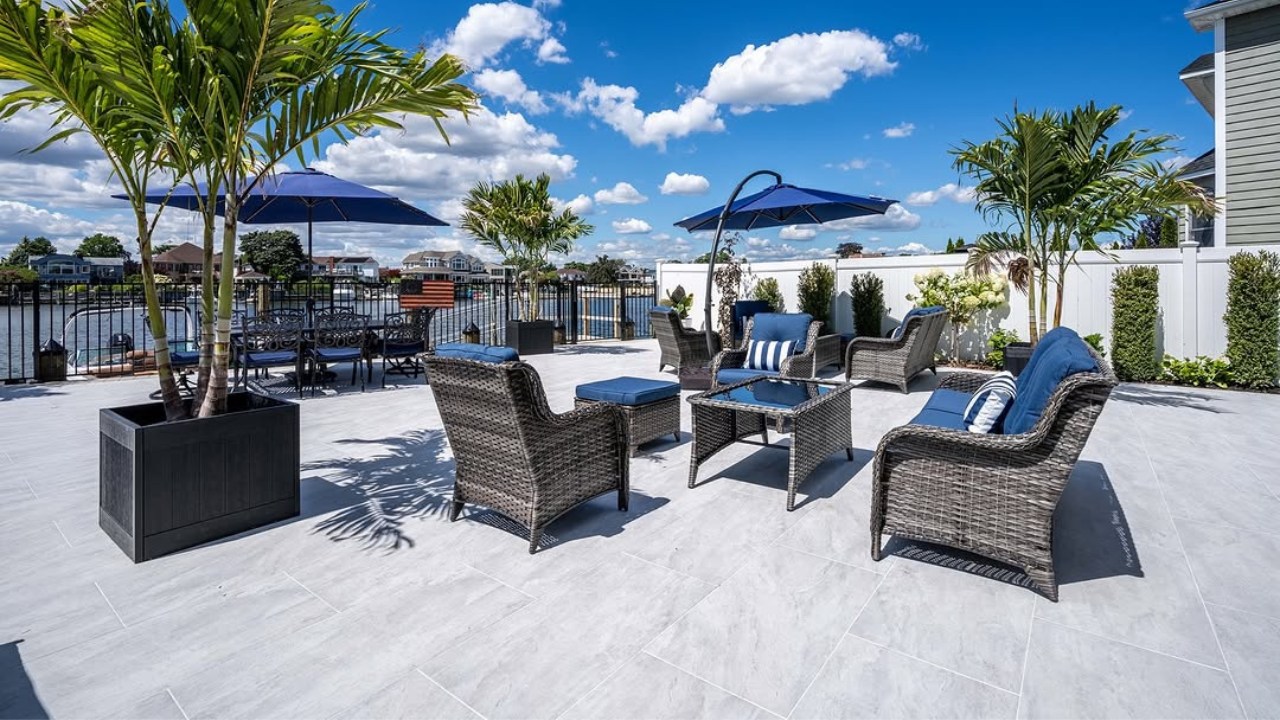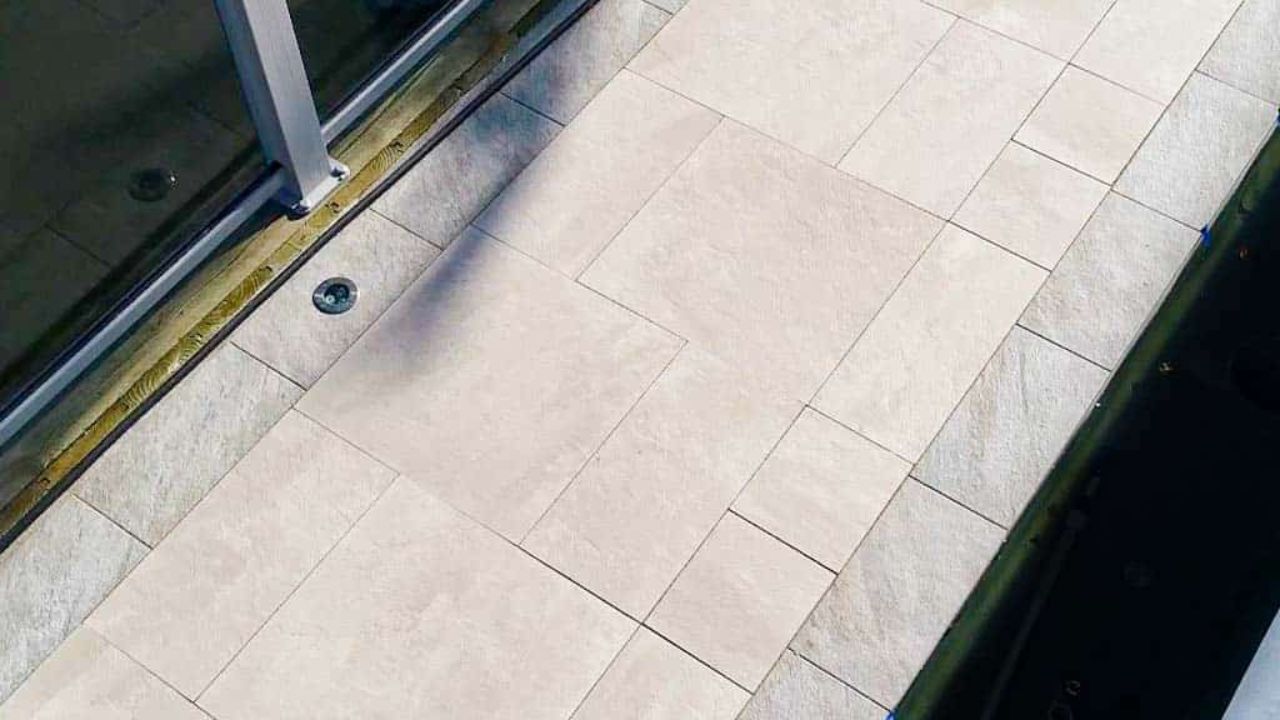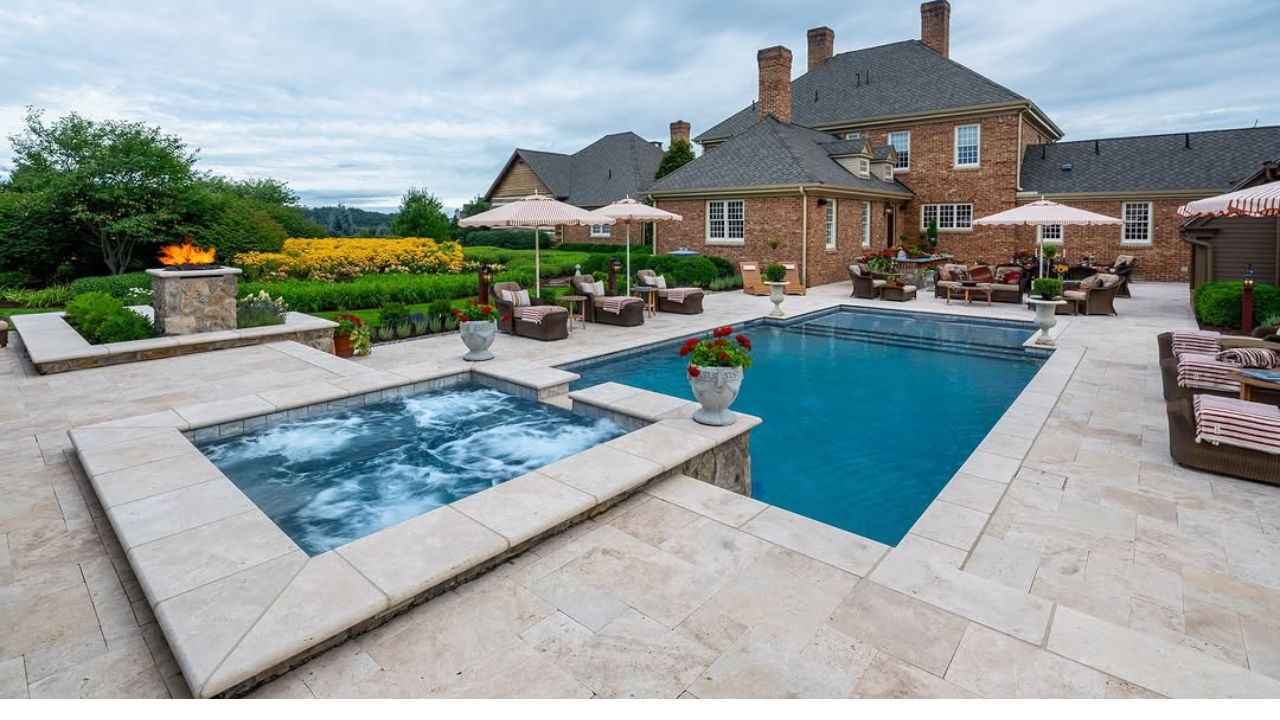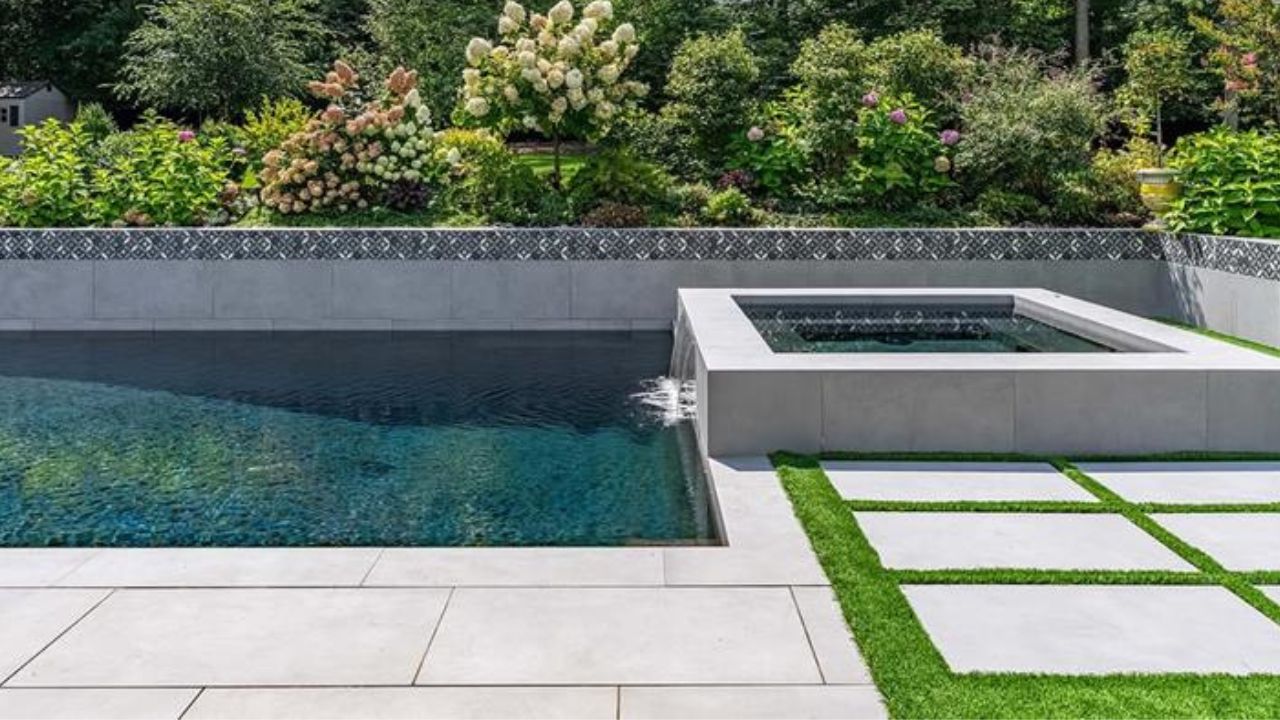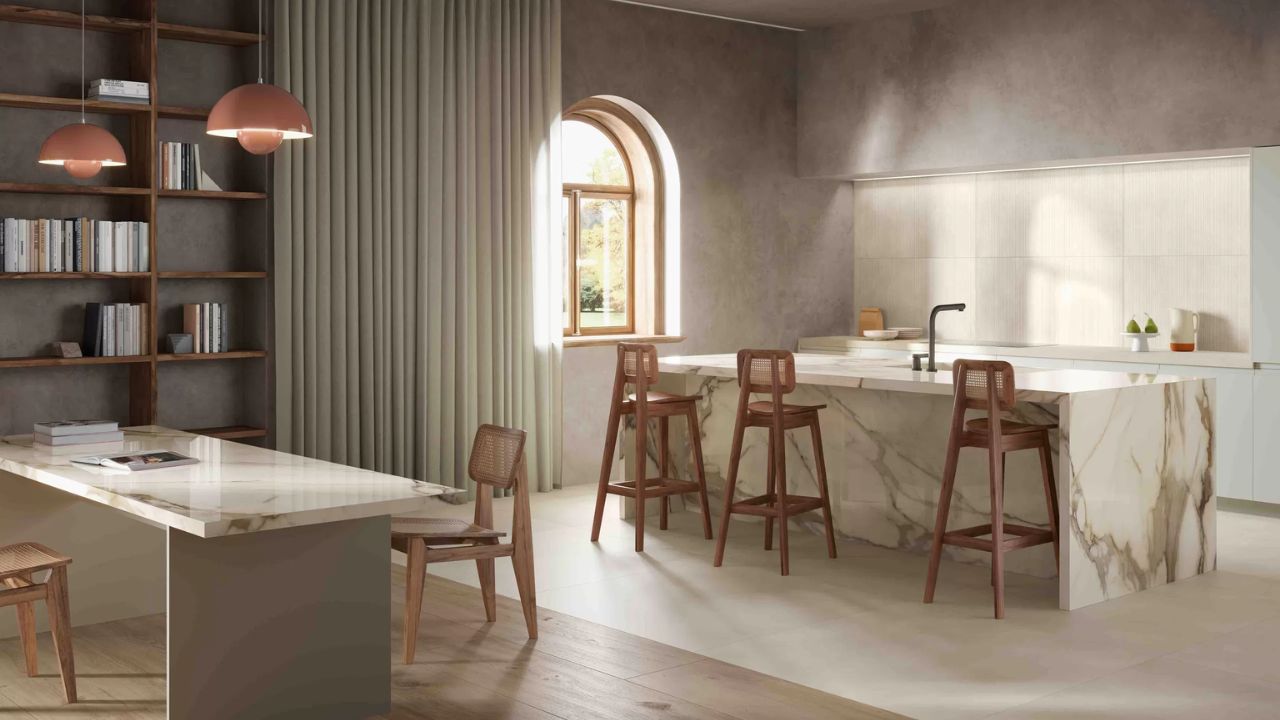Exterior stone has been a part of buildings for centuries. These days, homeowners, project managers, and businesses still rely on these stones for beauty and strength. When selecting stone siding for modern structures then the choice goes beyond beauty and appearance. It involves performance in local climates, paver installation requirements, and long-term maintenance for the home exterior.
In this post, we will cover 12 types of exterior house stone with every bit of detail, so you will know how to make the best choice for your project.
1- Granite
It is one of the most sought-after choices for exterior house stone from steps and retaining walls, to outdoor landscaping, because of its durability. Granite is an igneous rock that gets its shape from cold magma. It is popular for its interlocking crystal structure, which gives it an unmatched hardness and strength. It can resist moisture, UV exposure, and stains. This is why it is a top choice for a stone exterior design in regions with heavy rain, snow, or extreme sunlight.
You can find granite in mostly black, gray, and speckled patterns, which allows architects to match it with both traditional and modern home designs. Due to its weight and thickness, this stone cladding requires reinforced support structures, but once installed, granite can last for generations with minimal maintenance.
Pros and Cons of Granite
| Pros | Cons |
| Extremely durable | Higher cost than most stones |
| Weather and stain resistant | Heavy, requires strong support |
| Wide range of natural colors | Installation takes skilled labor |
2- Limestone
Limestone is a type of stone that has an understated beauty and is widely popular as exterior house stone. It is a sedimentary rock that is formed from marine organisms and compacted shells. This gives any house exterior a warm, earthy, and light-toned finish. The subtle texture and neutral palette are well-suited to classical and Mediterranean-style homes. Limestone facade is naturally soft compared to granite, which is why it is easier to shape for window trims, arches, or decorative moldings.
However, it is porous and sensitive to acid rain, meaning it requires paver sealing in damp climates. In warm, dry areas, limestone performs exceptionally well and weathers gracefully. This gives any house facade an elegant and aged character. Project managers often select limestone for large-scale projects where pavers cost and aesthetics must balance.
Pros and Cons of Limestone
| Pros | Cons |
| Elegant, timeless appearance | More porous than granite |
| Easy to shape for detailing | Needs sealing in wet climates |
| Cost-effective for cladding | Can erode in acid rain areas |
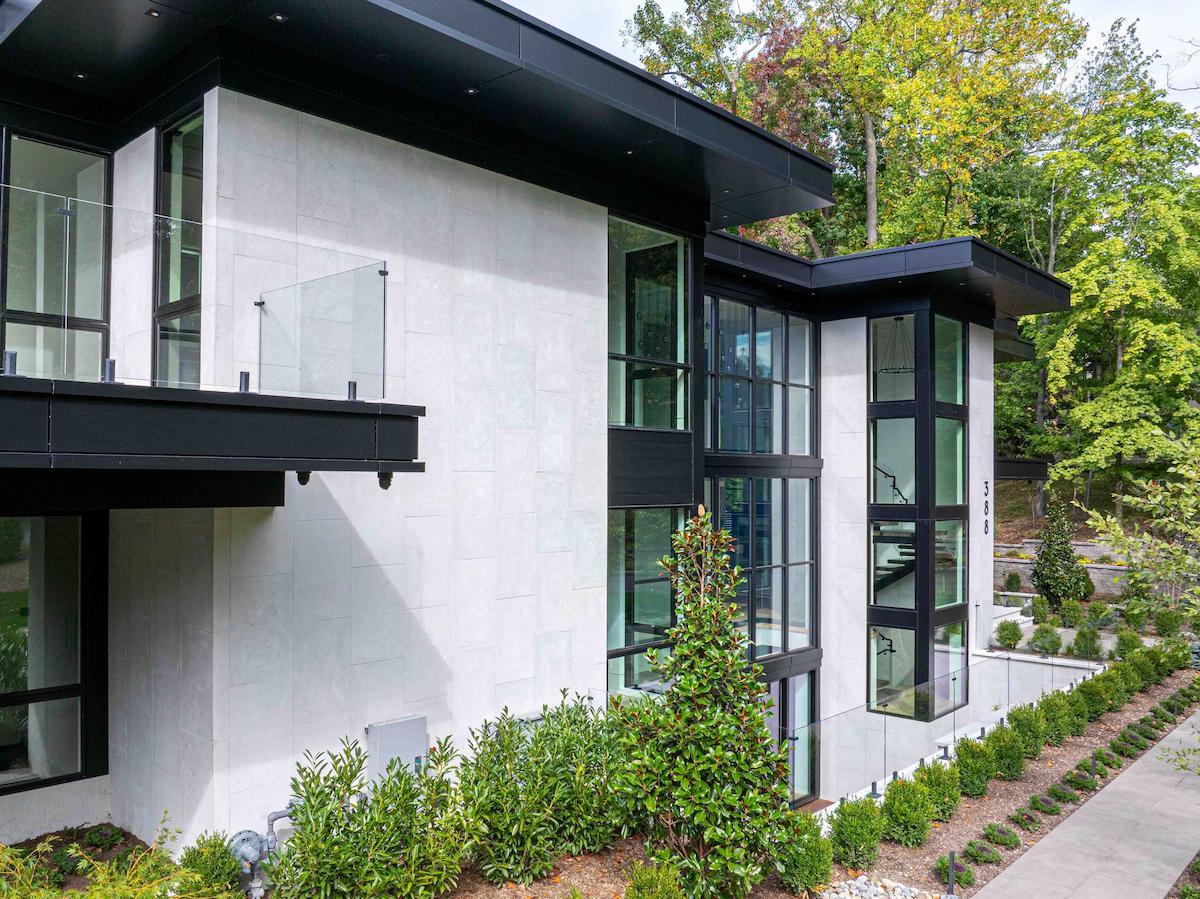
3- Sandstone
If you like warm, earthy tones for your house walls, then sandstone is the best type of natural stone for you. It is composed of compacted sand grains and has color tones ranging from yellow to deep reds. The natural pattern and grain give exteriors a rustic charm that of often found in heritage buildings and traditional designs. The sandstone facade has a textured surface, which makes it naturally lip-resistant. This is why it is not only a good exterior house stone but also suitable for poolside, patios, and pathways.
While it is softer than slate or granite, it remains a popular choice due to affordability and easy availability. To prevent water absorption and surface flaking, sealing is recommended, especially in humid climates. In 2025, sandstone will remain widely used in projects that aim to blend architecture with natural surroundings.
Pros and Cons of Sandstone
| Pros | Cons |
| Attractive natural patterns | Softer than granite or slate |
| Good slip resistance | Can absorb moisture |
| Affordable compared to marble | Requires regular sealing |
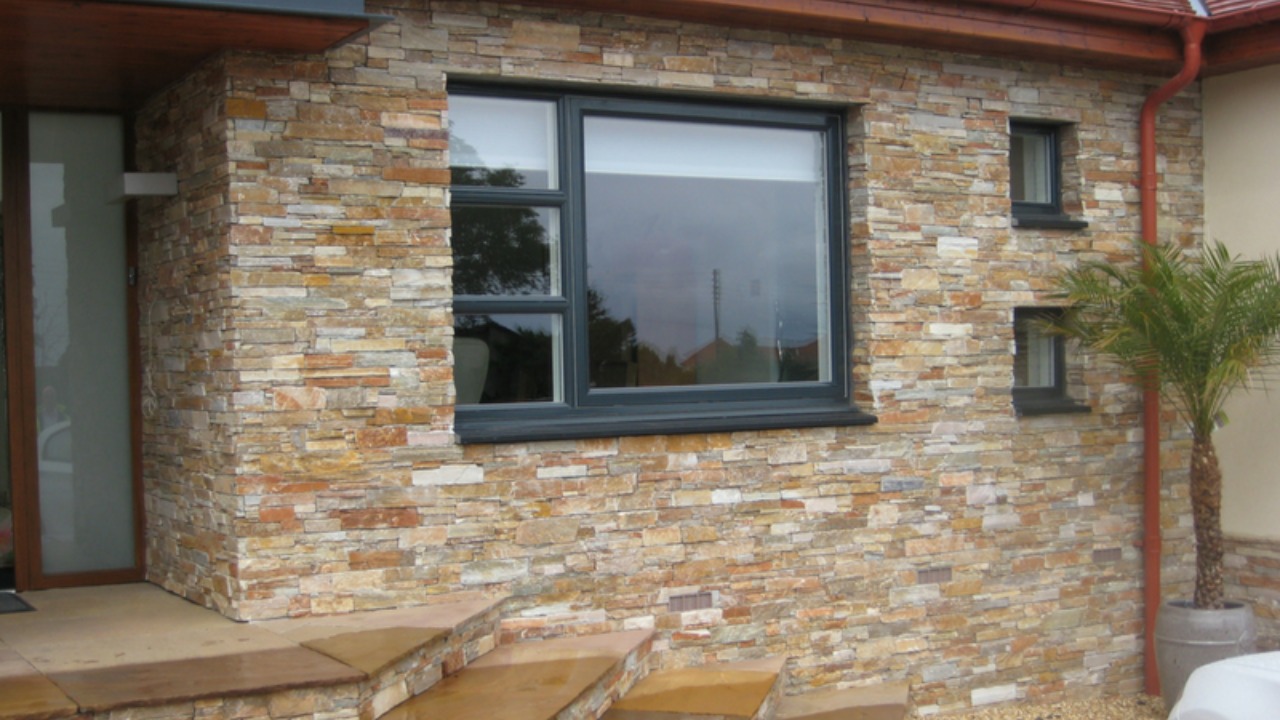
4- Slate
If durability is your preference, then slate stone will be the best choice for your exterior house stone. It is a metamorphic stone, splits into thin layers with a fine-grained texture. Because of its durability, it is a stronger candidate for exterior cladding and roofing. In modern house designs, slate creates bold, textured walls that resist fire, frost, and weathering.
Its natural split surface offers slip resistance, and it makes slate suitable for walkways and cladding in wet regions. Slate resists fire and frost, making it an excellent long-term investment. Dark grays, greens, and purples lend a distinctive character to facades.
Pros and Cons of Slate
| Pros | Cons |
| Resistant to harsh weather conditions | Limited color palette |
| Distinctive layered texture adds depth | Can flake if poorly sourced |
| Fire-resistant and low maintenance | Installation costs are higher |
5- Marble
You can give your outdoor area a stunning and luxurious look with marble exterior house stone. Marble is a metamorphic rock formed a limestone. Homeowners value it because of its luxurious appearance and polished surface. On house exteriors, marble is less common for full cladding but remains popular for entrance columns, accent walls, and decorative facades. However, marble is porous and prone to etching from acidic rain or pollution.
This home exterior stone requires a regular sealing and maintenance routine. Its reflective surface enhances the visual appeal, which is why project managers and contractors prefer it in low-exposure areas where aesthetics matter most.
Pros and Cons of Marble
| Pros | Cons |
| Luxurious, high-end finish | Susceptible to staining and etching |
| Wide variety of colors and veining | Requires sealing and regular maintenance |
| Adds long-term property value | More expensive than most alternatives |

6. Travertine
Travertine is a porous stone, but it brings warmth and texture to house exteriors. As an exterior house stone, it adds a beautiful and organic feel to the house facade. The natural beige and tan tones create welcoming facades that pair well with Mediterranean or classical architecture. In warm, dry climates, travertine stone ages gracefully and develops a weathered patina that enhances its charm.
Travertine natural stone cladding works well for walls, patios, and courtyards, but performs poorly in freeze-thaw regions unless treated.
Pros and Cons of Travertine
| Pros | Cons |
| Warm, natural color tones | Porous surface needs filling |
| Lighter than granite, easier to install | Sensitive to acidic cleaners |
| Moderately priced and versatile | Not suitable for cold, wet climates |

7. Fieldstone
Fieldstone is gathered from fields, riverbeds, or glacial deposits. This is a perfect stone that provides an authentic, rustic look. No two stones are alike, making every facade unique. Fieldstone walls have a distinctive, organic personality that blends with landscapes effortlessly. Its irregular shapes make it ideal for traditional, cottage-style, or rustic house exteriors.
This exterior house stone installation is labor-intensive, but the results blend seamlessly with natural surroundings.
Pros and Cons of Fieldstone
| Pros | Cons |
| Distinctive, organic appearance | Labor-intensive to install |
| Durable in outdoor conditions | It can be costly to source locally |
| Naturally complements landscapes | Requires skilled masonry techniques |
8. Quartzite
Quartzite is a metamorphic rock formed from sandstone under intense heat and pressure. It is harder than a granite slab, making it one of the most durable exterior house stones. You can see the sparkling quartz crystals visible on the surface, and they add brightness and subtle shine to facades. You can find them in white, gray, pink, and golden tones, which makes quartzite fit both modern and traditional homes.
It resists heat, UV rays, and harsh weather effortlessly. This makes it a well-suited option for climates with harsh sun or extreme cold. Although heavier and more expensive than sandstone pavers, quartzite requires little maintenance and stands up to decades of exposure without losing its beauty.
Pros and Cons of Quartzite
| Pros | Cons |
| Highly durable and dense | Limited color options |
| Heat and UV-resistant | Costs more than sandstone |
| Low maintenance | Heavy material |
9. Basalt
Basalt, an igneous volcanic rock that has a uniform, dark gray to black color. As an exterior house stone, it looks clean and smooth. This can create a contemporary look for the exterior of the house that fits well with modern architecture. It is used for wall cladding, pathways, or accent walls because of its strength and density.
Basalt look porcelain pavers are also resistant to scratches and heavy impact. Still, it can be prone to cracking under freeze-thaw conditions if not properly installed, which is why it requires professional handling.
Pros and Cons of Basalt
| Pros | Cons |
| Extremely dense and strong | Limited geographic availability |
| Consistent dark shades suit modern homes | Can crack in freezing climates |
| Excellent for sleek, minimalist exteriors | Higher cost for large projects |

10. Bluestone
Your love for unique and luxurious exterior house stone will be fulfilled with bluestone. It is often a type of sandstone or siltstone that is popular and has high pricing for its blue-gray hues. It works beautifully for exterior facades, walkways, and garden walls.
Its slip-resistant surface also makes it a great choice for poolside exteriors. While durable, bluestone may fade with prolonged UV exposure if left unsealed.
Pros and Cons of Bluestone
| Pros | Cons |
| Cool, attractive shades add elegance | May fade in strong sunlight |
| Non-slip surface ideal for wet areas | Heavy and challenging to install |
| Versatile for facades, walkways, and patios | Needs sealing in damp climates |
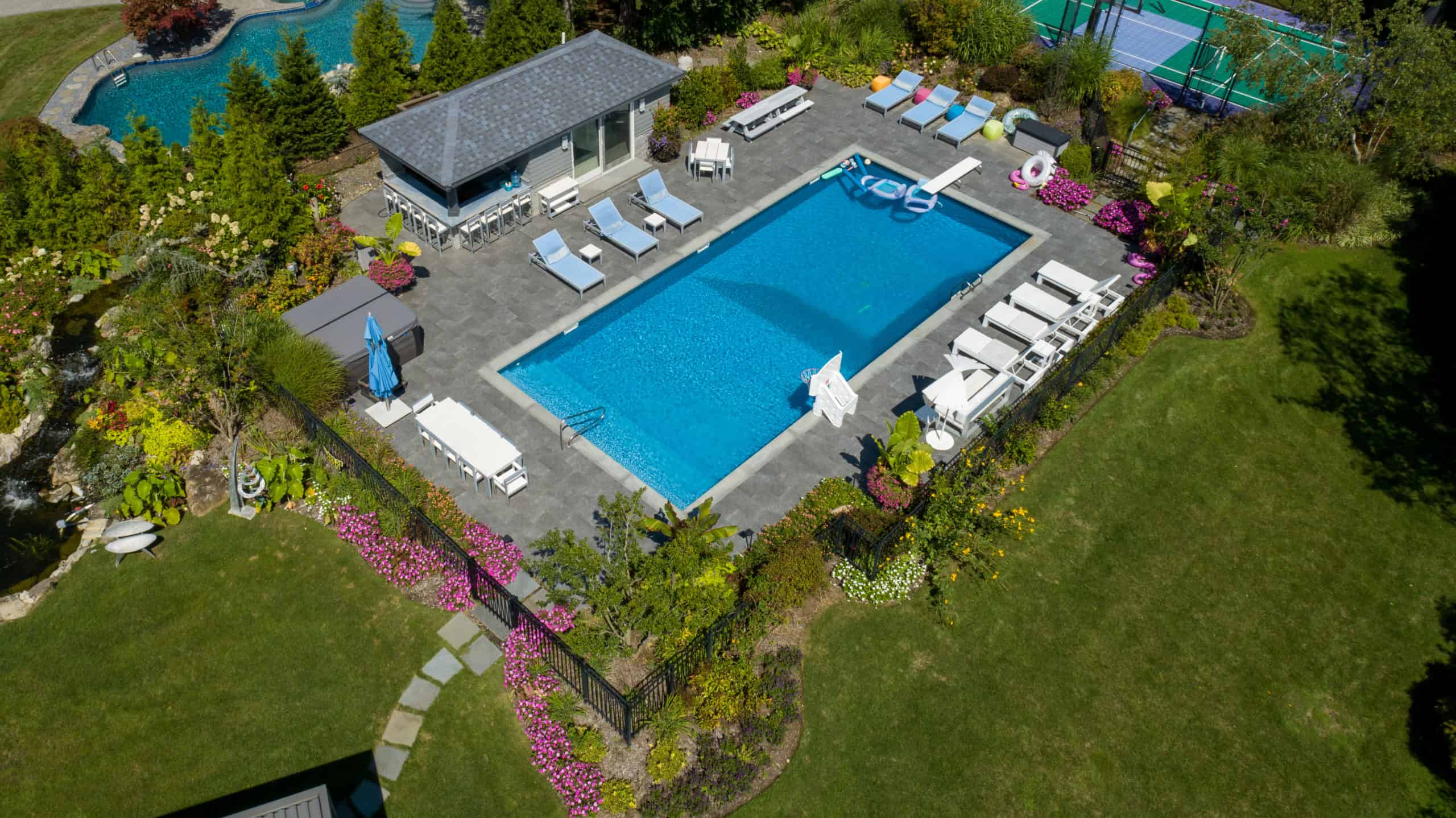
11. Stone Veneer
Stone Veneer is one of the most popular and unique-looking outdoor housing stones. They give your outdoor walls a distinct look and feel due to their shape. It is a thin cut of natural stone pavers in a way to cover walls.
For house exteriors, it delivers the authentic look of solid stone without the paver cost or weight. Stone veneer is especially popular for remodeling projects, as it can be installed over existing surfaces.
Pros and Cons of Veneer Stone
| Pros | Cons |
| Lightweight and easier to install than full stone | Needs a proper substrate for support |
| More affordable than full-depth stone | Less durable than solid blocks |
| Wide variety of natural styles | Can chip if not installed correctly |
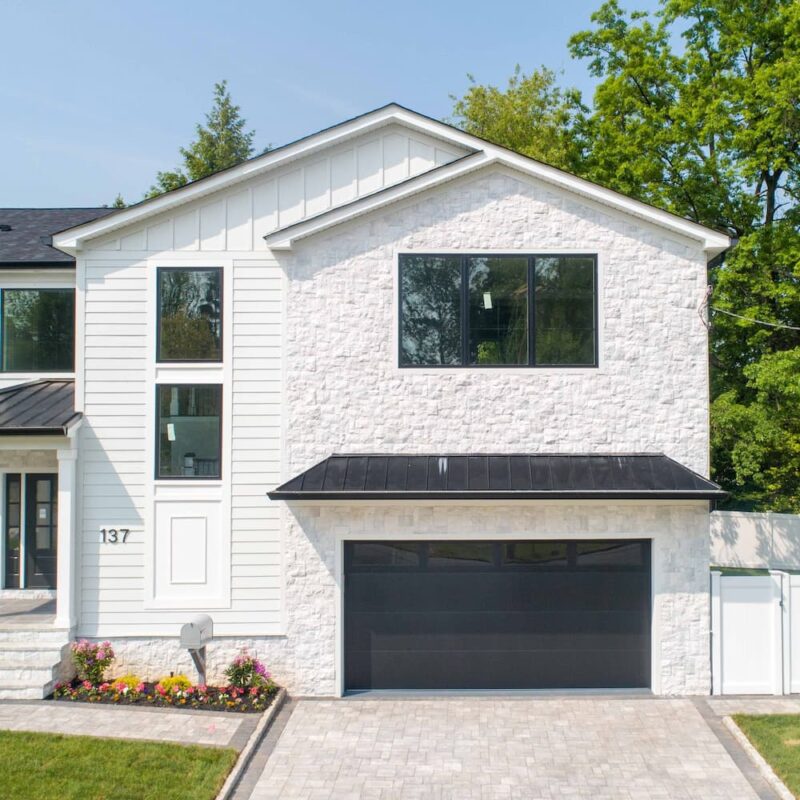
12. Quartz
Quartz is a synthetic stone manufactured by combining natural quartz crystals with resins and pigments. The result is a thick, non-porous surface that offers strength and consistency in color. Unlike natural stone, quartz does not require sealing and resists stains from oils, coffee, or wine. It is widely used in modern exteriors, especially in sleek facades and outdoor kitchens. It offers both durability and a refined appearance.
However, quartz slabs may discolor if exposed to direct sunlight over time, which makes placement a key consideration. For shaded patios or semi-covered exteriors, quartz performs exceptionally well.
Pros and Cons of Quartz
| Pros | Cons |
| Non-porous and stain-resistant | Can discolor under UV exposure |
| Wide color and finish options | Higher cost than some natural stones |
| Low maintenance, no sealing | Not ideal for uncovered outdoor areas |
| Strong and durable surface | Manufactured look in some designs |
FAQs on Exterior House Stones
Here are your most asked questions about outdoor house stones answered.
Q1. Which stone lasts the longest on house exteriors?
Granite and quartzite are the most durable stones for exterior use that last for decades with minimal maintenance.
Q2. Which stone is best for a modern-style house?
Basalt, quartzite, and bluestone fit contemporary designs.
Q3. Can manufactured stone replace natural stone?
No. Manufactured stone is suitable for budget-conscious projects, but it lacks the long-term durability of natural stone.
Q4. What stone requires the least maintenance?
Granite and quartzite need the least care. Both resist staining, scratching, and weathering without frequent sealing.
Q5. How do I choose the right stone for my climate?
In wet or freeze-prone climates, pick dense stones like granite or quartzite. In warm, dry climates, travertine, sandstone, or limestone perform well.
Bottom Line
Exterior house stone offers a great visual experience to any exterior of a house. While being aesthetic, they do add structural integrity and durability for a wide range of climates. Not every outdoor stone is equal. Some offer better durability, like quartzite and granite, while some offer better visuals, like veneer and marble. Make sure to select the exterior stone cladding according to your climate, architectural style, and most importantly, durability.
Looking to upgrade your home with durable and stylish facades? Explore our wide collection of facade pavers in New Jersey. NT Pavers offers premium Exterior House Stones that combine beauty, durability, and long-lasting performance for your exterior walls.


